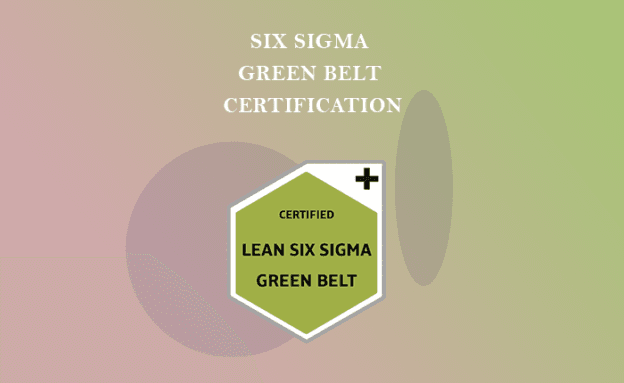Six Sigma Green Belt Certification Training

About Course
Six Sigma Green Belt Certification validates expertise in implementing Six Sigma methodologies to improve process quality and efficiency. It covers DMAIC (Define, Measure, Analyze, Improve, Control) principles, statistical tools, and project management techniques. Aimed at process improvement professionals, it ensures proficiency in reducing defects and variability. Certification demonstrates skills in data-driven decision-making and continuous improvement, enhancing career prospects by validating the ability to lead quality improvement projects. It enables professionals to drive organizational efficiency, reduce costs, and enhance customer satisfaction, making them valuable assets in industries like manufacturing, healthcare, finance, and services.
Course Content
SECTION-1: SIX SIGMA FUNDAMENTALS
-
Six Sigma Foundations and Principles
-
Quality Gurus Inc Certificate, Digital Badge, PMI PDUs, SHRM PDCs (Optional)
-
Download our Summary Sheets Book
-
How Six Sigma Benefits Organizations?
-
Quiz 1a: Six Sigma Basics
-
DMAIC Approach of Improvement
-
“D” for Define
-
“M” for Measure
-
“A” for Analyze
-
“I” for Improve
-
“C” for Contro
-
Quiz 1b – DMAIC Approach
-
Lean Foundations and Principles – Benefits
-
Lean Foundations and Principles – 5 Principles
-
Quiz 1c: Lean Foundation
-
Six Sigma Roles and Responsibilities – Yellow Belt
-
Six Sigma Roles and Responsibilities – All Belts
-
Quiz 1d: Six Sigma Belts
-
Team Types
-
Team Stages
-
Quiz 1e: Teams
-
Decision Making Tools
-
– – Brainstorming
-
– – Nominal Group Technique (NGT)
-
– – Multi Voting
-
Communication Methods
-
Quiz 1f: Decision Making and Communication
-
Quality Tools – Introduction
-
Quality Tools – List of Tools
-
Tool # 1 – Check Sheet (Theory)
-
Tool # 1 – Check Sheet (Example)
-
Tool # 2 – Cause and Effect Diagram (Theory)
-
Tool # 2 – Cause and Effect Diagram (Example)
-
Tool # 3 – Histogram (Theory)
-
Tool # 3 – Histogram (Example)
-
Tool # 4 – Pareto Chart (Theory)
-
Tool # 4 – Pareto Chart (Example)
-
Tool # 5 – Scatter Plot (Theory)
-
Tool # 5 – Scatter Plot (Example)
-
Tool # 6 – Control Charts (Theory)
-
Tool # 6 – Control Charts (Example)
-
Tool # 7 – Stratification (Example)
-
Tool # 7 – Stratification (Theory)
-
Quiz 1g – Seven Basic Quality Tools
-
Six Sigma metrics
-
Defects per Unit (DPU)
-
Defects Per Million Opportunities (DPMO)
-
DPMO vs Sigma Level
-
Rolled Through Yield (RTY)
-
Cycle Time
-
Quiz 1h – Six Sigma Metrics
-
Cost of Quality – Introduction
-
Cost of Quality – Visible vs Invisible Cost
-
1E2-7-3 Cost of Quality – Classification
-
1E2-7-4 Cost of Quality – Prevention Cost
-
1E2-7-5 Cost of Quality – Appraisal Cost
-
1E2-7-5 Cost of Quality – Appraisal Cost
-
1E2-7-6 Cost of Quality – Internal Failure Cost
-
1E2-7-7 Cost of Quality – External Failure Cost
-
1E2-7-8 Why to Measure the Cost of Quality?
-
Quiz 1i – Cost of Quality
-
Assignment: SECTION-1 – Six Sigma Fundamentals
-
SECTION-1 Quiz
SECTION-2 DEFINE PHASE
SECTION 3: MEASURE PHASE
SECTION 4: ANALYZE
SECTION 5: IMPROVE AND CONTROL
Earn a certificate
Add this certificate to your resume to demonstrate your skills & increase your chances of getting noticed.

